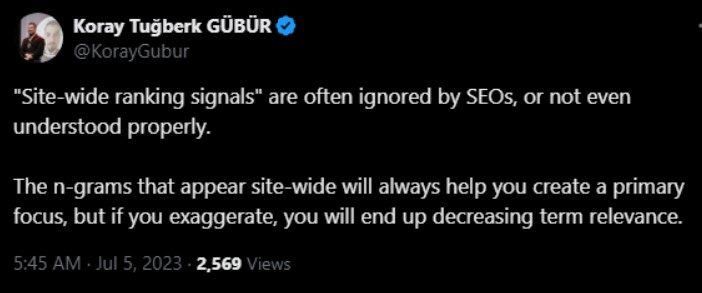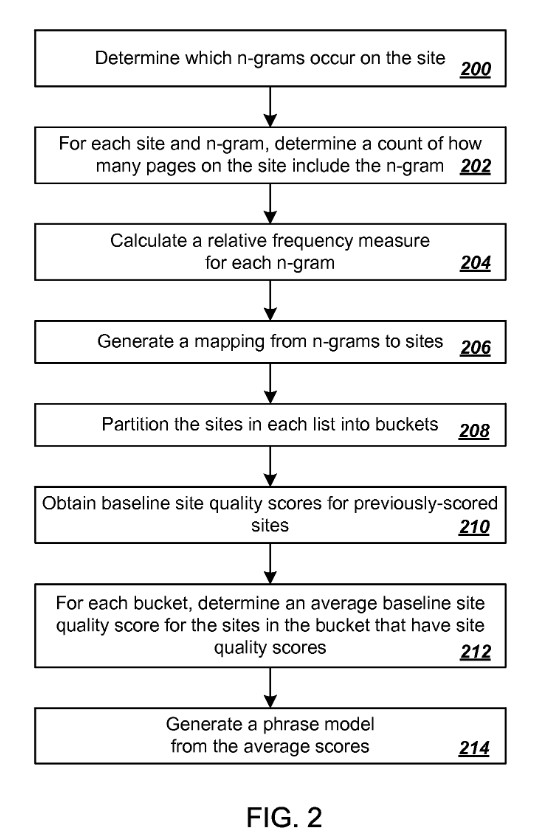Sitewide N-Grams
Site-wide N-grams help in identifying recurring keywords, phrases, and themes that represent the core topics of the website. By analyzing these across the entire website, search engines can determine the focus and expertise level of the site in specific areas, contributing to its topical authority.
For instance, if your site repeatedly uses N-grams like "electric scooter battery," "scooter charging," or "battery life," it signals to search engines that the website has an in-depth focus on electric scooters, batteries, and related topics.
2. Benefits of Analyzing Site-Wide N-Grams
- 🚀 Increases Relevance and Contextual Flow: By aligning site-wide N-grams with key themes, you help search engines understand how pages relate to each other. For example, an e-scooter site might use N-grams around "battery durability," "electric scooter range," and "battery maintenance," ensuring relevance.
- 🔍 Assists in Query Matching and Responsiveness: N-grams help in targeting variations of user queries that naturally arise within a topic. Including multiple related N-grams (like "scooter battery life" and "battery recharge time") improves the chances of capturing traffic from long-tail and related search queries.
- 🔗 Builds Stronger Internal Links and Contextual Bridges: When N-grams align across pages, it strengthens internal linking by naturally connecting related content. This allows pages to reinforce each other's relevance and boosts topical authority.
3. Practical Use of Site-Wide N-Grams
- 🎯 Identify Core Topics: Use N-grams that best represent your primary focus areas. For instance, a security company might use N-grams like "K9 security services," "safety protocols," and "event security" to convey its service areas and expertise.
- 📊 Optimize Content for Macro and Micro Semantics: Macro N-grams represent overarching topics across the site (e.g., "electric scooters" for an e-scooter site), while micro N-grams delve into subtopics (like "battery maintenance tips" or "scooter safety features"). This layering reinforces topical coverage.
- 📈 Track Changes and Adjust: Analyze how N-grams perform over time and adapt based on new user queries, search trends, or changing SEO priorities. Refreshing the N-grams periodically keeps the site aligned with current search engine algorithms and user intent.
4. Improving N-Grams for Higher Topical Coverage and Relevance
- 🛠️ Use Diverse Query Structures: Include variations such as "how to maintain scooter battery" and "battery durability tips" to cater to different search intents.
- 📚 Implement Across Site Hierarchy: N-grams should appear consistently across main headings, content body, anchor texts, and boilerplate content to solidify the site’s focus areas in the eyes of search engines.
5. How Site-Wide N-Grams Enhance Topical Authority
- 💡 Semantic Consistency: When your content features consistent N-grams throughout, it creates a network of related terms and ideas, helping search engines see your site as an authority on these topics.
- 📊 Influences Historical Data Positively: Consistently well-performing N-grams contribute to positive historical data through better user engagement, longer session durations, and a higher number of relevant search queries matched.
Sitewide Example:
Imagine you have a website about "Italian Cooking." You want search engines to recognize your site as relevant to this topic, so you use certain phrases, or "n-grams," like "Italian recipes," "pasta dishes," and "Italian ingredients" across multiple pages of your site.
Balanced Use (Good): If you use these phrases naturally in relevant places (like in blog posts, recipe pages, and ingredient guides), search engines can understand that your site is focused on Italian cooking. This can improve your overall ranking for searches related to Italian food.
Overuse (Bad): If you use "Italian recipes" or "pasta dishes" excessively in every single page, even when it doesn’t fit (like in the About Us or Contact Us pages), it can make your site seem forced or unnatural. This could decrease your relevance, as search engines may see it as keyword stuffing, which can hurt your rankings.
In short, use important keywords consistently but naturally across your site. Don’t force them everywhere, or it could end up harming your site's performance in search results.
Sitewide N-Grams
Central Entity: The entity that appears in the core and outer sections of the topical map, and all the site-wide n-grams, and context-terms are related to the central entity. It is covered site-wide, and every topical map node, from main or supplementary content, has to touch it.
Source Context: The Source Context is connected to the site-wide N-grams, the source's context has to be reflected on the website on every web page, in boilerplate, and in the main content as well.
Sir Koray about N-Grams:

🌌 Reference from Google Patent No: US9767157B2

🔄 Generating a Phrase Model (FIG. 2)
This process helps predict site quality using phrase models.
Steps:
- 🌐 Analyze Sites:
- Identify n-grams (sequences of words) from indexed web pages.
- N-grams can be 2-grams, 3-grams, or longer.
- Some infrequent n-grams (found on very few sites) are excluded.
✔️ Count N-Grams
- Count how many pages contain each n-gram.
📊 Calculate Relative Frequency
- Measure how often each n-gram appears across a site.
📝 Generate N-Gram to Site Mapping
- Each n-gram is mapped to a list of websites.
🌟 Partition Sites into Buckets
- Sites are grouped based on n-gram frequency.
- Buckets typically range from 20 to 100.
🏆 Determine Site Quality Scores
- A baseline quality score is assigned to each site.
- The average score for each bucket is calculated.
👨💻 Generate a Phrase Model
- Maps each phrase to an average site quality score.
- Excludes neutral phrases (e.g., "on the") that don’t indicate quality.

🔮 Predicting Site Quality (FIG. 3)
⚖️ Measure Phrase Frequency
- Determine how often each phrase appears on the site.
🌟 Obtain Scores from the Phrase Model
- Look up relative frequency measures in the phrase model.
📊 Calculate Aggregate Score
- Compute an overall site quality score.
- Use a weighted average to balance different factors.
⚖️ Apply Smoothing (If Needed)
- If a few phrases dominate, the score is adjusted.
- The score is blended with a neutral score.
🎉 Final Site Quality Score
- Used by the ranking engine (152) to rank search results.
- If no phrases match, no score is assigned.
- Minimum number of phrases (e.g., 5, 10, or 20) is required for scoring.
